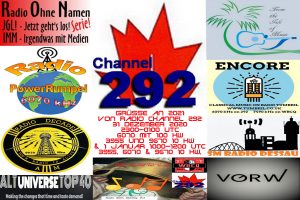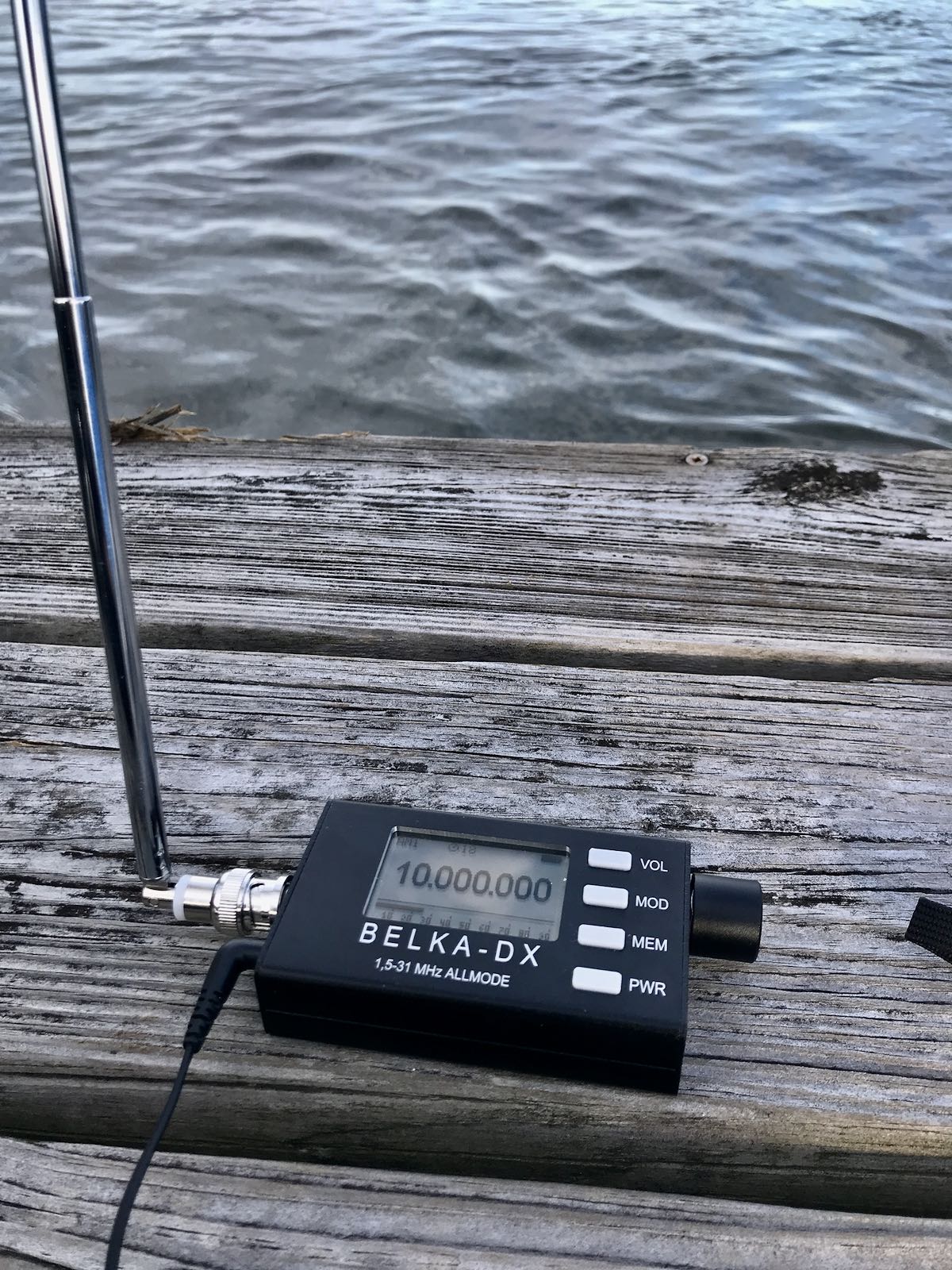
Radio Waves: Stories Making Waves in the World of Radio
Because I keep my ear to the waves, as well as receive many tips from others who do the same, I find myself privy to radio-related stories that might interest SWLing Post readers. To that end: Welcome to the SWLing Post’s Radio Waves, a collection of links to interesting stories making waves in the world of radio. Enjoy!
Many thanks to SWLing Post contributors Paul, Dennis Dura, Wilbur Forcier, and the Southgate ARC for the following tips:
A century ago, the age of radio began in Germany. Cultural broadcasts made radio popular before the Nazis appropriated it for their propaganda.
On December 22, 1920, the first radio broadcast in Germany hit the airwaves. “Attention, attention — this is Königs Wusterhausen on radio wave 2700.” This was how a Christmas concert by the employees of the German Reichspost was announced. Featuring a clarinet, reed organ, string instruments and piano, they played in the broadcasting building of the city of Königs Wusterhausen.
Modest sound quality
Transmission quality was poor: static and crackling accompanied the musical performance. Only official agents of the German Reichspost could listen to this transmission since in accordance with the Treaty of Versailles, private citizens in Germany were forbidden from listening to radio signals.
Society on the move
Nonetheless, radio in Germany was born. Society at the time of the Weimar Republic was in transition. Painters were no longer merely depicting the natural worlds — Cubism, Dadaism and abstract art were unearthing new dimensions of the imagination that had no direct reference to reality. Musicians and composers were creating hitherto unheard-of sounds with jazz and twelve-tone techniques joining familiar rhythms and keys. Writers and poets were creating parallel plots and stories. Consumer products were being mass-produced. Aviation was connecting people over thousands of kilometers — and radio was booming.
The first official radio entertainment program in Germany was broadcast on October 29, 1923. The Allies had by then lifted the ban on listening to radio waves. The fact that we even have an acoustic record of it today is due to a coincidence: a few months after it was broadcast, the program was re-enacted and preserved on disc.
Broadcasting with a mission
Meanwhile, inflation was soaring in Germany. Poverty and misery were rampant, especially in the big cities. “Radio was welcomed in Germany like a liberating miracle, especially at a time of intense emotional and economic hardship,” Hans Bredow, considered the “father” of German radio, said at the time.
Like many radio pioneers of the Weimar years, Bredow had lofty ambitions to widen national perspectives in his position as Radio Commissioner to the German Reich’s Postal Minister. This new technology was to signal an end to the age of ignorance and prejudice.
In December 1923, there were a total of 467 listeners. One year later, there were already one million listeners within the Reich’s entire territory. And in 1932, there were more than four million paying radio subscribers — and at least as many non-paying listeners. The daily broadcasting time also increased steadily. In 1923, it was 60 minutes; by 1932, there were already 15 hours of radio programs every day.
Entertainment for the masses
It was the new possibilities of simultaneous acoustic reporting that captivated the “Radioten, ” a derogatory term that was used for radio lovers at the time. An extraordinary media event at that time, the radio achieved its exciting effect through its immediacy and “live” character. And it gave birth to a genre unknown until then: the radio play.
Meanwhile, heated debates abounded about the negative effects of radio on listeners, culture and politics. Many intellectuals and artists distanced themselves from the new medium. Among them was the Austrian composer Arnold Schönberg. “Broadcast media caters to the majority. At any time of the day or night, people are served a feast for the ears without which they apparently can no longer live today. I assert the right of the minority against this delirium for entertainment: one must also be able to broadcast what is necessary, and not only the trivial.”[Continue reading full story at DW…]
The International Space Station cost more than $100 billion. A ham radio set can be had for a few hundred bucks.
Perhaps that explains, in part, the appeal of having one of humankind’s greatest scientific inventions communicate with Earth via technology that’s more than 100 years old. But perhaps there’s a simpler explanation for why astronauts and ham radio operators have been talking, and talking, for years.
NASA astronaut Doug Wheelock was just a few weeks into his six-month mission at the space station when feelings of isolation began to set in.
Wheelock would be separated from loved ones, save for communication via an internet phone, email or social media. At times, the stress and tension of serving as the station’s commander could be intense.
One night, as he looked out a window at the Earth below, he remembered the space station’s ham radio. He figured he’d turn it on—see if anyone was listening.
“Any station, any station, this is the International Space Station,” Wheelock said.
A flood of voices jumbled out of the airwaves.
Astronauts aboard the space station often speak to students via ham radio, which can also be used in emergencies, but those are scheduled appearances. Some, like Wheelock, spend their limited free time making contact with amateur radio operators around the world.
“It allowed me to … just reach out to humanity down there,” said Wheelock, who interacted with many operators, known as “hams,” during that stay at the space station in 2010. “It became my emotional, and a really visceral, connection to the planet.”
The first amateur radio transmission from space dates to 1983, when astronaut Owen Garriott took to the airwaves from the Space Shuttle Columbia. Garriott was a licensed ham who, back on Earth, had used his home equipment in Houston to chat with his father in Oklahoma.
Garriott and fellow astronaut Tony England pushed NASA to allow amateur radio equipment aboard shuttle flights.
“We thought it would be a good encouragement for young people to get interested in science and engineering if they could experience this,” said England, who was the second astronaut to use ham radio in space.[…]
The International Space Station cost more than $100 billion. A ham radio set can be had for a few hundred bucks.
Perhaps that explains, in part, the appeal of having one of humankind’s greatest scientific inventions communicate with Earth via technology that’s more than 100 years old. But perhaps there’s a simpler explanation for why astronauts and ham radio operators have been talking, and talking, for years.
NASA astronaut Doug Wheelock was just a few weeks into his six-month mission at the space station when feelings of isolation began to set in.
Wheelock would be separated from loved ones, save for communication via an internet phone, email or social media. At times, the stress and tension of serving as the station’s commander could be intense.
One night, as he looked out a window at the Earth below, he remembered the space station’s ham radio. He figured he’d turn it on — see if anyone was listening.
“Any station, any station, this is the International Space Station,” Wheelock said.
A flood of voices jumbled out of the airwaves.
Astronauts aboard the space station often speak to students via ham radio, which can also be used in emergencies, but those are scheduled appearances. Some, like Wheelock, spend their limited free time making contact with amateur radio operators around the world.[…]
Belgian amateurs activate the following special event callsigns to remind everyone of Covid-19 restrictions and express gratefulness to medical personnel:
OS2HOPE, OT5ALIVE, OT4CARE, OR20STAYHOME, OT6SAFE, OP19MSF, OQ5BECLEVER, OR6LIFE, OO4UZLEUVEN and OT2CARE.
Due to the recent stricter COVID-19 measures, many radio amateurs will be forced to spend most of the following weeks at home again. Many are obliged to telework. Teleworking is definitely becoming the new standard for several employees. COVID-19 has accelerated teleworking for almost all companies.
At the request of the Royal Union of Belgian Radio Amateurs (UBA), the BIPT has decided to once again grant permission to apply for customised special call signs. The exceptional conditions apply to special call signs with an encouraging meaning.
These appropriate special call signs may be used at the home address of radio amateurs. The conditions are the same as during the first lockdown in spring.
Radio amateurs are allowed to re-request the special call sign obtained during the first lockdown.
Operation until January 31, 2021.
For QSL information see QRZ.com
Do you enjoy the SWLing Post?
Please consider supporting us via Patreon or our Coffee Fund!
Your support makes articles like this one possible. Thank you!






















